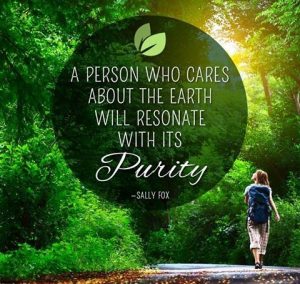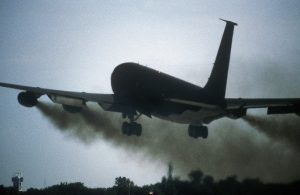A variety of climate and weather indicators show that our planet is growing increasingly warm. Many countries have recorded soaring annual temperatures; Mexico, Spain, Italy, Serbia, Romania, Budapest, Eastern Australia and India and many other Asian countries are facing numerous problems on account of heat waves. One report says that past few years’ recorded heat was a result of the combined influence of long-term global warming and a strong El Nino (warmer or colder than average ocean temperatures in one part of the world can influence weather around the globe).
The major indicators of climate change continue to reflect warming of our planet. Several markers such as land and ocean temperatures, sea level and greenhouse gas absorption in the atmosphere have broken records of past few years.
A recent study conducted by a group of researchers, including from the Indian Institute of Science and ISRO’s Vikram Sarabhai Space Centre has identified Black Carbon (BC), which is ejected by airplanes in considerable amount is responsible for upsetting monsoon by depleting the ozone layer and speeding up glacier melt. Black Carbon (BC) is a part of filth/muck which is formed from the incomplete combustion of fossil fuels, wood and biomass burning.
It was believed earlier that the airborne black carbon gets dispersed and settles down within a few months due to rain and wind and it was believed that it travels just a bit more than 4 km. But recently the scientists have found evidence of BC existing up to 18 km into the stratosphere (stratosphere is the second layer of Earth’s atmosphere as you go upward) and there are about 10,000 of them in every cubic centimeter. Keeping in mind the shape and location of these particles, the researchers believe that it could only draw from emissions from aviation fuel.
The BC creates a problem because their particles linger long enough which create other chemical reactions that can deplete the ozone layer. Since BC particles strongly absorb solar and terrestrial radiation and heats up the atmosphere it upsets the monsoon system. If they get deposited on snow, it leads to speed up the heating of snow and quickening the melting of glaciers.
We humans depend on fossil fuels, their burning produce all the major greenhouse gases such as carbon dioxide (CO2), methane and nitrous oxide, which are responsible majorly for climatic changes. Atmospheric CO2 concentration reached 402.9 parts per million (ppm), surpassing 400 ppm for the first time in the modern record and in ice core records dating back as far as 8,00,000 years. According to few scientific reports, 2016 was the hottest year since contemporary records began, marking the third year in a row that global records were broken planet-wide. Both land and sea surface temperatures set new highs. Melting glaciers and polar ice caps increased the world’s oceans, and global average sea level rose to a new record high in 2016 — about 3.25 inches (82 mm) higher than the 1993 average. Global sea level has risen for six straight years, with the highest rates of increase seen in the western Pacific and Indian Oceans. In the sensitive Polar Regions, sea ice in both the Arctic and Antarctic hit record lows.
Land temperatures have risen too. It is scary to know that average Arctic land surface temperature was 2 degree Celsius above the 1981-2010 average. This represents a 3.5 degree Celsius increase since records began in 1900. Some extreme weather events increased, such as unusually high tropical cyclone activity. A total of 93 named tropical cyclones were observed worldwide in 2016, well above the 1981-2010 average of 82 storms. Over the northern and eastern Indian peninsula, a week-long heat wave was experienced. Just in midst of April saw temperatures exceed 44 Celsius, contributed to a water crisis for 330 million people and to 300 fatalities.
In our own ways let us safeguard the planet with these simple habits:
- Plant as many trees as possible: Only trees can safeguard us from natural calamities.
- Let’s change our travel habits little: If we choose to walk, bike, or take public transportation, we will reduce the carbon footprint significantly.
- Go for compost: it is need of the hour. While shopping, focus on purchasing locally grown products rather than imported goods. Buying locally means less transportation, processing, and packaging. And when it comes to food – local means seasonal and fresh. Remains of plants and kitchen waste such as stems and leaves, fruits, flowers make rich compost filled with nutrient and are good manure for plants, helping them grow faster.
- Conserve water: We take freely available water often for granted. Running taps, unchecked water leakages, over flowing water trucks are all examples of unnecessary water wastage that needs to be stopped. Let’s put our efforts in rainwater harvesting. Let us respect water, let’s preserve it for our future generations.
- Environment safety first: Instead of purchasing dumping items like plastic plates, spoons and cups, opt for reusable, washable flatware. Many industries dispose their oil, paint, ammonia and various other chemical solutions openly, which is hazardous to water bodies and air as these chemicals are soaked into the groundwater. They weaken our immune system with time. Let us support regulations that make companies keep the environment clean. Agriculture is also a known polluter when it comes to chemical runoff. And when it comes to your own farm, small garden or backyard, avoid using over-fertilizing. Go for natural organic system.
- Let us protect our mother nature: We all need to strike a balance between ethical development and a healthy environment. This may take decades, even centuries. But together, we can do wonders! Let us protect this planet which we share as our home.















































